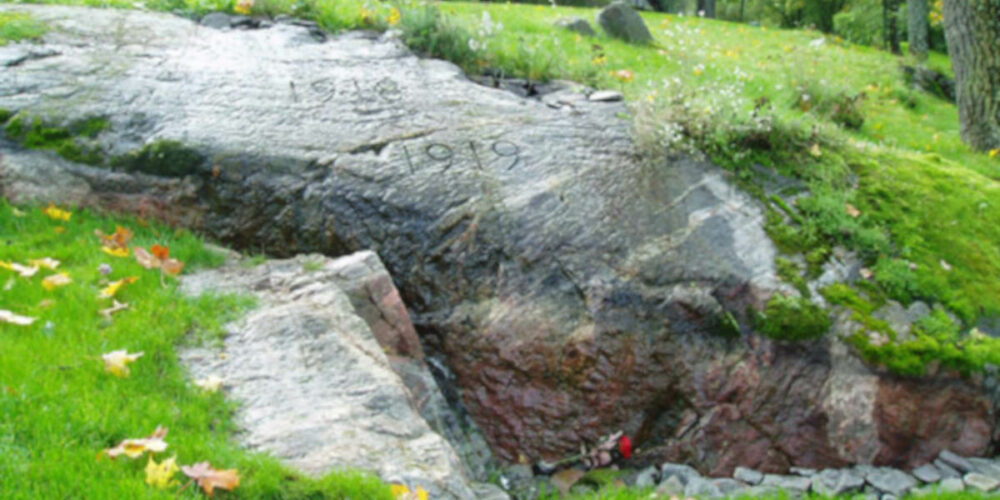Suomenlinna is a beautiful little island off the coast of Helsinki. A regular boat service (part of the public transport system) ferries residents, navy cadets and tourists alike to the island in about fifteen minutes. On the trip across, depending on the time of year, you can be met by seal pups, flocks of different birds, or the remains of ice floes that ice-breaker ships have left behind.
But the little time capsule of an island hides a dark past; and away from the main route you can find a small memorial to the prisoner-of-war camp that was here from 14 April 1918 until 14 March 1919. The camp was a remainder and a reminder of the civil war that was fought for a little over three weeks in 1918 between White Finland and the Finnish Socialist Workers’ Republic.
The camp on Suomenlinna was one of thirteen large camps scattered about the country. At their peak these camps held about 80,000 prisoners of war, including 5,000 women, 1,500 children, and 8,000 Russians. About 10,000 members of the Red Guard and suspected sympathisers were interned in the camp on Suomenlinna alone.
In total, 68,000 of the prisoners were convicted by field court-martial for treason as a result of their membership, or assumed membership, of the Red Guards; 39,000 were released on parole, and 555 were sentenced to death, of whom 113 were executed.
The mortality rate for prisoners was astronomical, with approximately a tenth of the prisoners dying of starvation and diseases alone. Deaths were compounded by the angry, punitive and callous treatment of the prisoners by the White Finnish state.
The visibility of the abject horror of the camps and their hopeless conditions affected the minds of many people much more deeply than the war itself and increased support for the Reds throughout Finland, with people in the vicinity of the camps attempting to sneak food and other comfort to the prisoners.
Even with this change in public attitude, the camps were totally ignored for decades by the White interpretation of history, and it took until 1927 for the last fifty prisoners to be pardoned and full rights returned to the Reds. The Finnish government finally paid reparations to 11,600 former prisoners of war in 1973.
The memorial, unveiled on 28 September 2004, consists of two rocks, one natural and one quarried, engraved with the years 1918 and 1919. It can often be found adorned with candles and flowers, in remembrance of those who fought for a different world.






